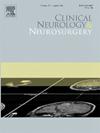周末入院的颈脊髓损伤与在私人非营利性中心的停留时间较短有关
IF 1.8
4区 医学
Q3 CLINICAL NEUROLOGY
引用次数: 0
摘要
目的:我们评估颈脊髓损伤(CSCI)患者周末与工作日住院是否影响合并症、住院时间和死亡率,同时探讨医院特异性因素的作用。方法对2015-2020年全国住院患者样本进行查询。倾向评分匹配(PSM)控制了年龄、性别、医院区域和疾病严重程度,以1:1的比例匹配周末入院与工作日入院。参数统计测试然后比较临床和医院的特定因素。结果共分析5036例患者,平均年龄56岁,女性24% %。尽管发生休克(p = 0.0154)、颈椎骨折(p = 0.0408)和通气支持要求(p <; 0.001)的可能性较高,但周末入院的死亡率并未增加(p = 0.305)。脊柱骨折患者的死亡率高于非脊柱骨折患者(p <; 0.001)。按周末状态分层后,医院所有权/控制权和医院位置/教学状况与住院时间显著相关(p分别为 <; 0.001,p = 0.0276)。私立非营利性医院周末入院的住院时间较短(p = 0.00573),但直接出院回家的人数较少(p = 0.0314)。付款人类型和处置之间存在弱关联(cramsamr’s V = 0.146, p <; 0.001)。结论:这项全国性的回顾性研究显示,周末和工作日就诊的CSCI患者的总死亡率没有差异。在伴有相关骨折的患者中,脊柱骨折的死亡率高于非脊柱骨折。缩短住院时间与周末入住私人非营利中心有关,在该队列中死亡率没有差异。本文章由计算机程序翻译,如有差异,请以英文原文为准。
Weekend admission for cervical spinal cord injury associated with shorter length of stay at private non-profit centers
Objective
We assessed if weekend versus weekday admission for cervical spinal cord injury (CSCI) influenced medical comorbidities, length of stay, and mortality while also exploring the role of hospital-specific factors.
Methods
The National Inpatient Sample (2015–2020) was queried for patients with CSCI. Propensity score matching (PSM) controlled for age, gender, hospital region, and illness severity, matching weekend admissions in a 1:1 ratio with weekday admissions. Parametric statistical tests then compared clinical and hospital-specific factors.
Results
5036 patients were analyzed (mean age 56, 24 % female). Weekend admissions showed no increase in mortality (p = 0.305) despite a higher likelihood of shock (p = 0.0154), cervical fractures (p = 0.0408), and ventilatory support requirements (p < 0.001). Patients with spinal fractures had higher mortality than those with non-spinal fractures (p < 0.001). After stratification by weekend status, hospital ownership/control and hospital location/teaching status were significantly correlated with length of stay (p < 0.001, p = 0.0276, respectively). Private non-profit hospitals showed a shorter length of stay for weekend admissions (p = 0.00573), though fewer were discharged directly home (p = 0.0314). There was a weak association between payer type and disposition (Cramér's V = 0.146, p < 0.001).
Conclusion
This national retrospective study revealed no difference in overall mortality rates between weekend and weekday admissions for patients presenting with CSCI. In patients with associated fractures, spinal fractures showed higher mortality rates than non-spinal fractures. Decreased length of stay was associated with weekend admissions to private non-profit centers, with no difference in mortality rates in this cohort.
求助全文
通过发布文献求助,成功后即可免费获取论文全文。
去求助
来源期刊

Clinical Neurology and Neurosurgery
医学-临床神经学
CiteScore
3.70
自引率
5.30%
发文量
358
审稿时长
46 days
期刊介绍:
Clinical Neurology and Neurosurgery is devoted to publishing papers and reports on the clinical aspects of neurology and neurosurgery. It is an international forum for papers of high scientific standard that are of interest to Neurologists and Neurosurgeons world-wide.
 求助内容:
求助内容: 应助结果提醒方式:
应助结果提醒方式:


